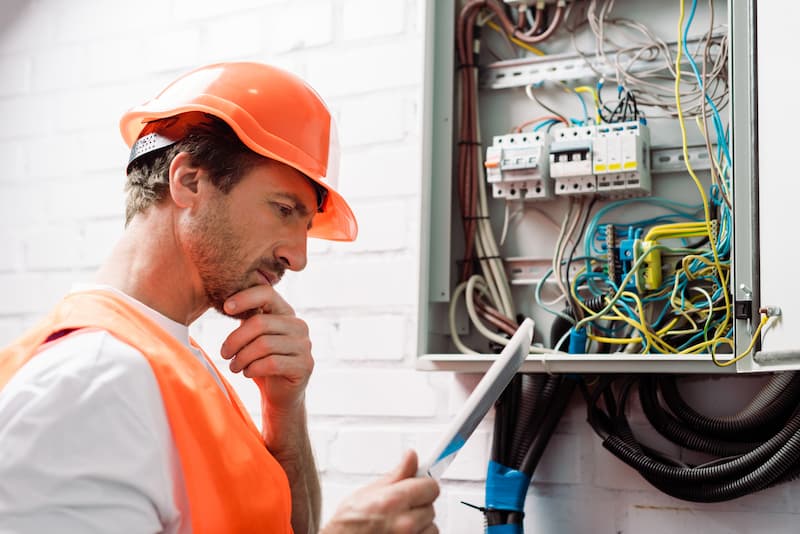Industry-specific mechanical engineering industry support for success.
Top Tips for Effective Electric System Troubleshooting
Troubleshooting electrical systems needs a systematic strategy, based in a detailed understanding of electric concepts and safety protocols. The nuances of effective fixing extend past simple technological expertise; recognizing how to record findings and focus on security can dramatically affect end results.
Understand the Basics
Comprehending the essentials of electric systems is important for effective troubleshooting, as a solid foundation allows service technicians to identify and solve problems more efficiently. A thorough understanding of electrical principles, such as voltage, current, resistance, and power, is important in recognizing the origin causes of issues. Voltage is the electrical possible difference that drives existing with a circuit, while resistance opposes the circulation of present, affecting the total capability of the system.
Knowledge with circuit elements, including resistors, capacitors, diodes, and switches over, is likewise vital. Each element plays a distinct function in circuit behavior and can influence performance when malfunctioning. In addition, recognizing series and identical circuit setups is vital, as these plans affect the distribution of voltage and existing within the system.
Professionals must be conscious of possible dangers, such as shock and short circuits, to apply secure troubleshooting practices. By mastering these foundational concepts, professionals boost their ability to conduct effective diagnostics and repair work, eventually leading to boosted efficiency and integrity of electric systems (electrical system troubleshooting).
Gather Necessary Devices
Reliable troubleshooting of electric systems calls for the right collection of tools to identify and settle problems precisely. A fully equipped technician can substantially boost effectiveness and efficiency in identifying problems. Essential tools consist of a multimeter, which determines voltage, current, and resistance, enabling for exact examinations of electrical components. Clamp meters are additionally beneficial for measuring current without disconnecting the circuit, ensuring safety and security and ease.
Furthermore, protected hand tools such as screwdrivers, pliers, and cord strippers are essential for securely controling electrical connections. It is additionally suggested to have a circuit tester available to validate the existence of voltage in outlets and cords. For even more complicated systems, a thermal imaging electronic camera can assist find overheating elements, showing potential failures.

Follow a Methodical Technique
Having actually collected the appropriate devices, the next action in fixing electric systems is to follow a systematic technique. A systematic strategy makes certain that service technicians can determine mistakes effectively and properly, minimizing downtime and preventing unneeded repair work.
Begin by evaluating the system's schematic diagrams and requirements. This includes checking each part systematically, starting from the power resource and functioning towards the lots.
Use screening tools, such as multimeters and oscilloscopes, to collect objective data regarding voltage, existing, dig this and resistance at different points within the system. This empirical proof will lead your troubleshooting initiatives and assist to confirm or remove prospective reasons for failing.
Furthermore, think about ecological elements that find here might influence the system's performance, such as temperature level fluctuations or dampness ingress. A thorough assessment of wiring, links, and elements will certainly make sure that all possibilities are represented.
Paper Your Findings
Extensive paperwork is essential in the troubleshooting procedure of electric systems. This technique not only aids in comprehending the root reason of the problem but likewise offers as a referral for future troubleshooting efforts.

Additionally, keeping a log of components replaced or repairs performed is vital. This info supports supply monitoring and can assist assess the durability and reliability of details parts.
Eventually, the documentation procedure must be complete yet concise, enabling very easy retrieval and evaluation - electrical system troubleshooting. By focusing on detailed documentation, specialists can develop a valuable knowledge base that not just aids in current troubleshooting yet also encourages future upkeep check here efforts, therefore enhancing overall system dependability

Prioritize Precaution
Acknowledging the inherent dangers connected with electrical systems is crucial for making sure safety throughout troubleshooting. Electrical shock, burns, and tools damage are just a few of the possible risks that professionals face. Focusing on precaution is not just a legal commitment but likewise an ethical vital that safeguards both the professional and the surrounding environment.
Prior to starting any troubleshooting task, service technicians should don proper individual safety tools (PPE), including insulated gloves, security glasses, and flame-resistant apparel. Ensuring that the workplace is completely dry and devoid of clutter can substantially lower the threat of accidents. It is necessary to de-energize circuits prior to starting any kind of job, verifying that they are not live with the use of a multimeter or voltage tester.
Establishing clear communication procedures with team members is likewise important; this guarantees that every person is mindful of possible risks and the standing of the electric system being worked with. Having an emergency feedback strategy in area can confirm very useful in the occasion of an event. By prioritizing precaution, technicians can efficiently reduce risks and cultivate a much safer workplace.
Conclusion
Reliable electrical system troubleshooting relies on a comprehensive understanding of basic principles and a methodical strategy. By gathering important devices, adhering to systematic examination methods, and diligently recording searchings for, the fixing procedure ends up being a lot more reliable and trusted. Prioritizing safety procedures makes sure the well-being of people involved and the honesty of the electrical system. Applying these techniques will certainly enhance the troubleshooting experience, bring about quicker resolutions and improved functional efficiency in electrical systems.